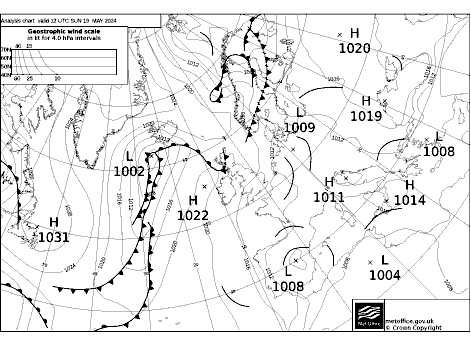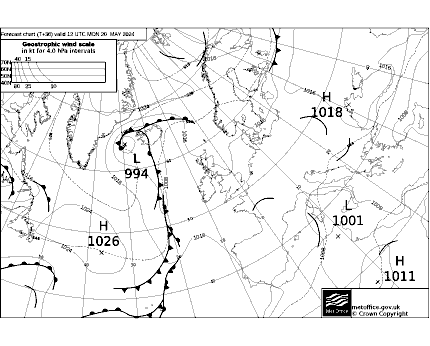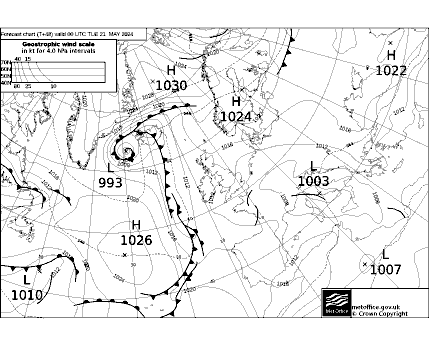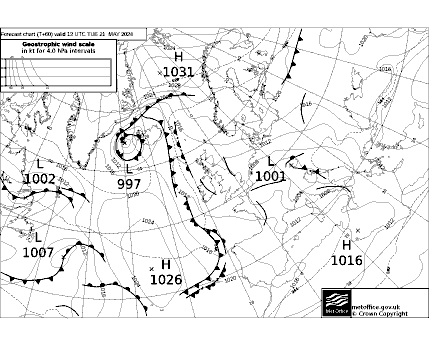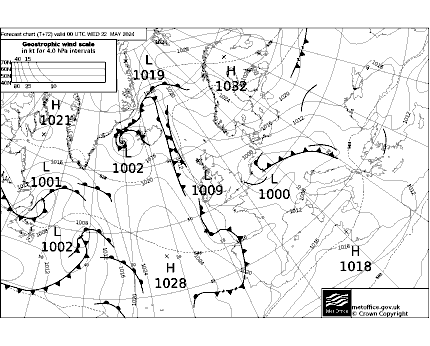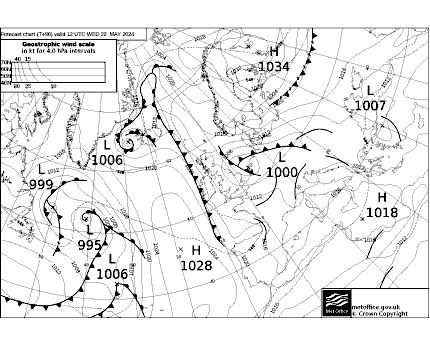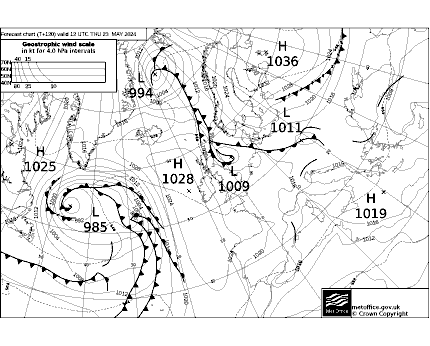Surface pressure charts
Cold front: The leading edge of an advancing colder air mass. Its passage is usually marked by clouds and precipitation, followed by a drop in temperature and/or humidity.
Warm front: The leading edge of an advancing warmer air mass. Its passage commonly brings clouds and precipitation, followed by increasing temperature and/or humidity.
Occluded front (or 'occlusion'): Forms when the cold front of a depression catches up with warm front ahead of it, lifting the warm air between the fronts into a narrow wedge above the surface. Occluded fronts bring clouds and precipitation.
Developing cold/warm front (frontogenesis): Represents a front that is forming due to increase in the temperature gradient at the surface.
Weakening cold/warm front (frontolysis): Represents a front that is losing its identity, usually due to rising pressure. Clouds and precipitation becomes increasingly fragmented.
Upper cold/warm front: Upper fronts represent the boundaries between air masses at levels above the surface. For instance, the passage of an upper warm front may bring warmer air at an altitude of 3,000 to 3,500 meters, without bringing a change of airmasses at the surface.
Quasi-stationary front: A stationary or slow-moving boundary between two air masses. Clouds and precipitation are usually associated.
Isobars: Contours of equal mean sea-level pressure (MSLP), measured in hectopascals (hPa). MSLP maxima (anticyclones) and minima (depressions) are marked by the letters H (High) and L (Low) on weather charts.
Thickness lines: Pressure decreases with altitude, and thickness measures the difference in height between two standard pressure levels in the atmosphere. It is proportional to the mean temperature of this layer of air, so is a useful way of describing the temperature of an airmass. Weather charts commonly show contour lines of 1,000-500 hPa thickness, which represent the depth (in decametres, where 1 dam = 10 m) of the layer between the 1,000 hPa and 500 hPa pressure levels. Cold, polar air has low thickness, and values of 528 dam or less frequently bring snow. Conversely, warm, tropical air has high thickness, and values in excess of 564 dam often indicate a heatwave.
Trough: An elongated area of relatively low surface-pressure. The throughs marked on weather charts may also represent an area of low thickness (thickness through), or a perturbation in the upper troposphere (upper through). All are associated with increasing clouds and risk of percipitation.
Convergence line: A slow-moving through, which is parallel to the isobars and tends to be persistent over many hours or days. This convergence line can give hours of persistent precipitation over very localised areas, whilst a few kilometers away it is relatively dry, leading to some heavy rain-/snowfall. In summer the convergence lines are not as easy to forecast, but then can still occur due to sea-breeze convergence, and are over the land, whilst in winter they are over the sea.
Example:
